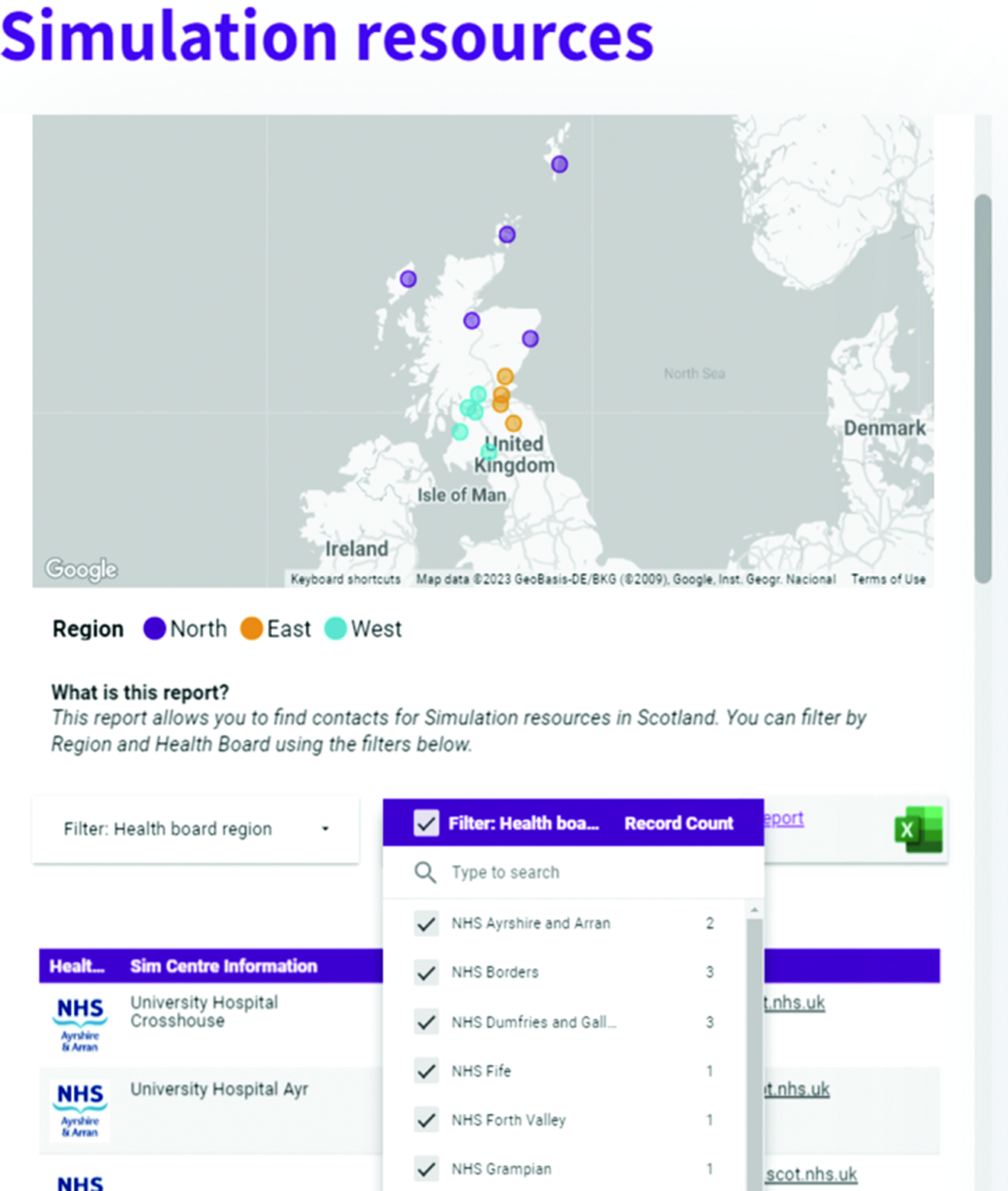The International Journal of Healthcare Simulation has been rebranded as the Journal of Healthcare Simulation. Please visit https://www.johs.org.uk to view all articles and for article submissions.
The International Journal of Healthcare Simulation has been rebranded as the Journal of Healthcare Simulation. Please visit https://www.johs.org.uk to view all articles and for article submissions.

Educators and workforce planners appreciate that clinical skills development and simulation-based learning are key strategic responses to safe and effective service provision and a sustainable workforce. However, some simulation-based experiences require simulators costing tens of thousands of pounds. In order to promote a ‘Once for Scotland’ approach, collaboration is essential to encourage sustainability by enabling sharing of equipment, training materials, processes, procedures and faculty between boards. Although there have been other scoping exercises [1], we believe that this the first to take place at a national level. This scoping exercise aimed to:
Establish what equipment is available in the territorial health boards;
Clarify the types of skills-based courses being run across NHS Scotland;
Connect and encourage collaboration between simulation providers
Information was gathered via Teams discussions and questionnaires. The responses were collated into Excel spreadsheets. These have been linked into an application to present the data in a more user-friendly manner online (Figure 1-A53).


Responses reveal that:
All health boards in Scotland have invested in simulation-based learning.
There is pioneering work with the establishment of medical and surgical bootcamps as well as national pharmacy simulation.
Additional work needs to be carried out to ensure that resources are invested wisely to areas of greatest need and that resources are shared within and between health boards.
It is clear where abundant simulation activities are taking place, as well as where there are gaps in equipment and faculty.
Distribution of the information gathered will reduce duplication of effort, increase collaboration and encourage the sharing of equipment between health and social care workers across Scotland. It is hoped that this scoping project will support the creation of new relationships between people, not just for their mutual benefit, but for the benefit of the people of Scotland. The results are a first step to providing a detailed inventory of the resources available to help ensure best value for money. We hope to see an increase in the sharing of equipment across Scotland similar to the use of the NES surgical cut suit which was purchased by the Scottish Centre for Simulation and Clinical Human Factors and recently used by the simulation team at NHS Lothian to provide a multi-professional immersive paediatric training session. The plan is to update this database on a regular basis and to widen the results to incorporate all health boards as well as universities.
Authors confirm that all relevant ethical standards for research conduct and dissemination have been met. The submitting author confirms that relevant ethical approval was granted, if applicable.
1. Sole ML, Elizabeth M, Amidei C. An analysis of simulation resources, needs, and plans in Florida. Clinical Simulation in Nursing. 2013 Jul 1;9(7):e265-71.